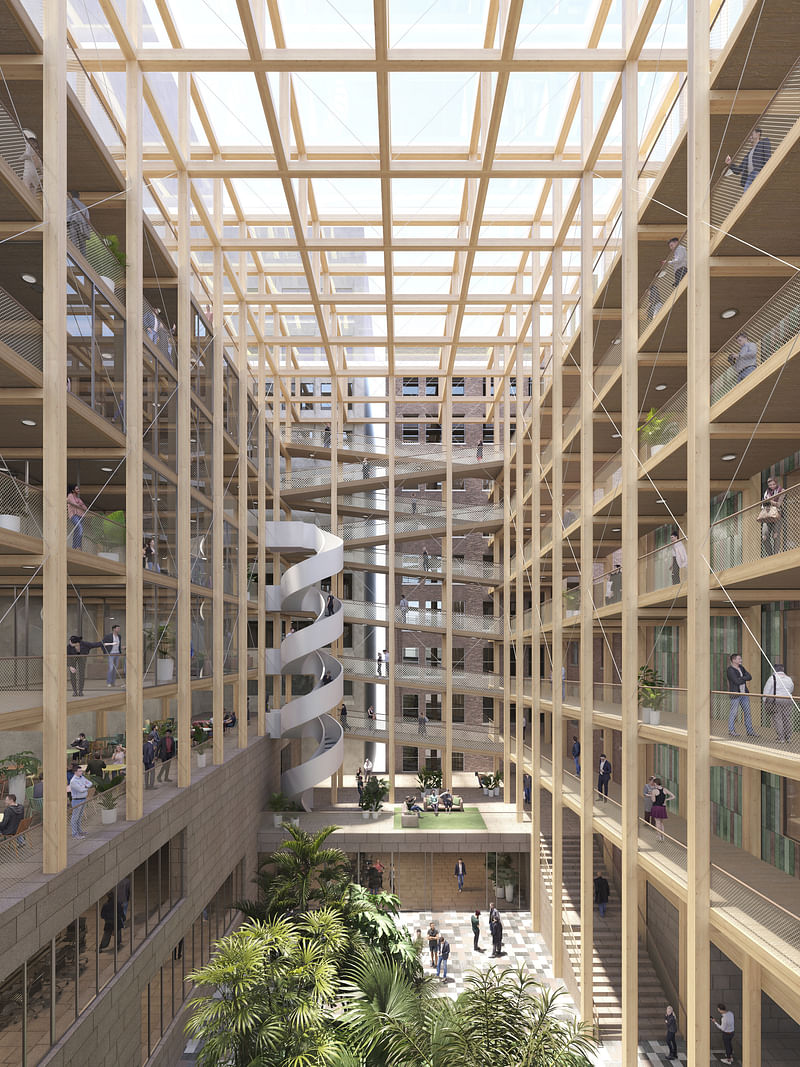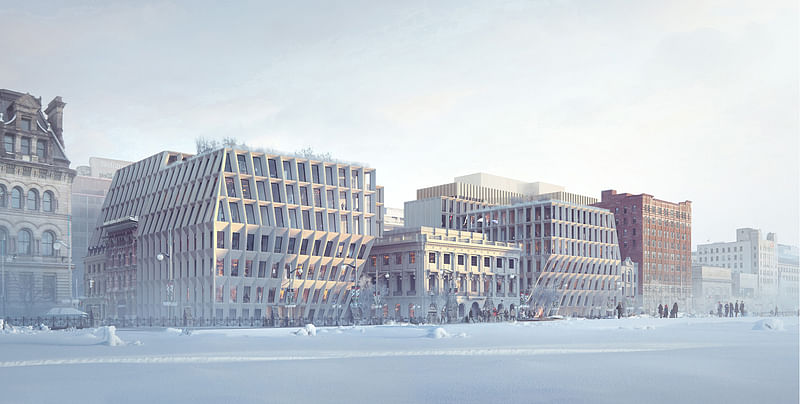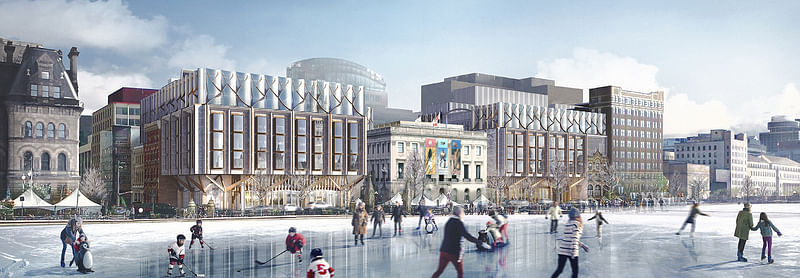Check out Chipperfield & Zeidler's winning design (and other finalists) in Canada's Parliamentary Block 2 redevelopment contest
By Josh Niland|
Wednesday, May 25, 2022

Related
The Government of Canada has formally announced the winner and finalists of the international competition for the redevelopment of the Parliamentary Precinct Block 2 site in the capital of Ottawa.
A design from David Chipperfield Architects in association with Toronto-based Zeidler Architecture took home the commission, defined by a new interconnecting garden atrium and timber-framed structures that combine with an influx of sustainability features and dedicated two-building space for Canada’s Indigenous Peoples to offer the country a redefined complex at the heart its national seat of power.
The winning entry was followed closely by designs from Provencher Roy, Wilkinson Eyre (in association with IDEA Inc.), Watson MacEwen Teramura Architects (with Behnisch Architekten), Diamond Schmitt Architects and BIG, and a joint venture from Renzo Piano Building Workshop and the Canadian firm NEUF Architects, which placed second.
Canada’s Public Services and Procurement Minister Filomena Tassi said: “The redevelopment of Block 2 will transform this mix of aging buildings into modern, inclusive, sustainable, secure and accessible accommodations for the Parliament of Canada. I truly hope that all Canadians will be able to visit and experience the chosen design, for years to come."
The project is expected to commence within an 18 to 24-month timeframe. Scroll down to see a list of descriptions for the winner and the five finalist designs.
First-place winner: Zeidler Architecture in association with David Chipperfield Architects



Team description: “Our proposal weaves together old and new to create a rich tapestry of past, present, and future. In the spirit of responsible stewardship, existing structures are given fresh purpose. The value of this built heritage is unlocked by a new net-zero building and public spaces that represent a bold new architectural expression of Canadian identity.”
Second-place finalist: NEUF Architects and Renzo Piano Building Workshop

Team description: “Our proposal…for the redevelopment of Block 2 uses this specific binary urban condition as a starting point and driver for design decisions… The driving consideration for the Block 2 north elevation is ensuring the primacy and dignity of the future Indigenous Peoples’ Space… The volumes are crowned with a forest landscape as a signal, at the heart of the precinct, for a greener path forward.”
Third-place finalist: Watson MacEwen Teramura Architects and Behnisch Architekten

Team description: “Our proposal for Block 2 holds that a building for transparent decision making should be equally democratic in its organization. Our design is not meant to be monumental. Rather, it offers diverse, egalitarian spaces – formal and informal, built and natural, large and small – for congregation, representation, and dialogue.”
OTHER SHORTLISTED ENTRIES:
Diamond Schmitt Architects and Bjarke Ingels Group, KWC Architects, ERA Architects

Team description: "Our proposal blends the dualities of its site. It creates a dignified urban frame on Wellington Street for Parliament Hill and the Parliamentary Precinct to the north, while it bounds Ottawa’s commercial core to the south and enriches the cosmopolitan atmosphere on Sparks Street."
Provencher Roy

Team description: "Our proposal for Block 2 seeks to instill a new national narrative rooted in this unique yet universal sense of interconnectedness, while integrating perennial Canadian values of openness, justice, and transparency. As a historic opportunity for symbolic reparation, our architectural vision for [Block2] is based on a will to restore, reconcile, and renew a shared belonging to Canada."
Wilkinson Eyre and IDEA Inc.

Team description: "Our proposal…presents a new identity embracing all the peoples of Canada through a series of buildings which do not employ the architectural motifs of empire. This new identity reflects the broad diversity of modern-day Canadians based on mutual respect, and a shared connection with nature, the seasons, Canada’s distinct regions and its unique landscapes.”

RELATED NEWS Canada will soon have an LGBTQ2+ National Monument after a winning proposal is announced

RELATED NEWS MODA is the 2022 RAIC Emerging Practice Award winner


Share
0 Comments
Comment as :